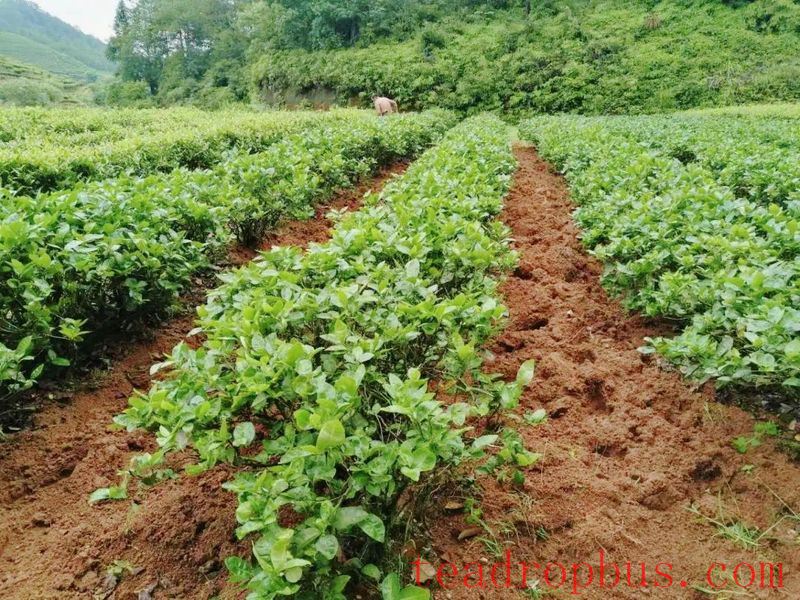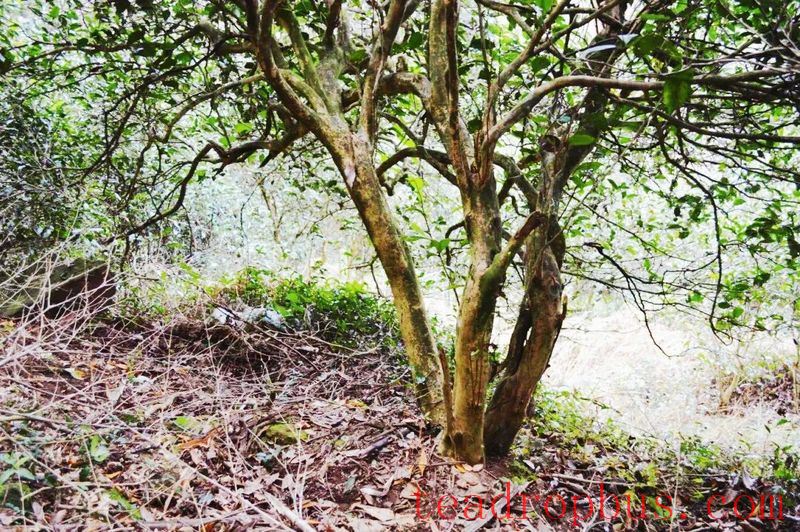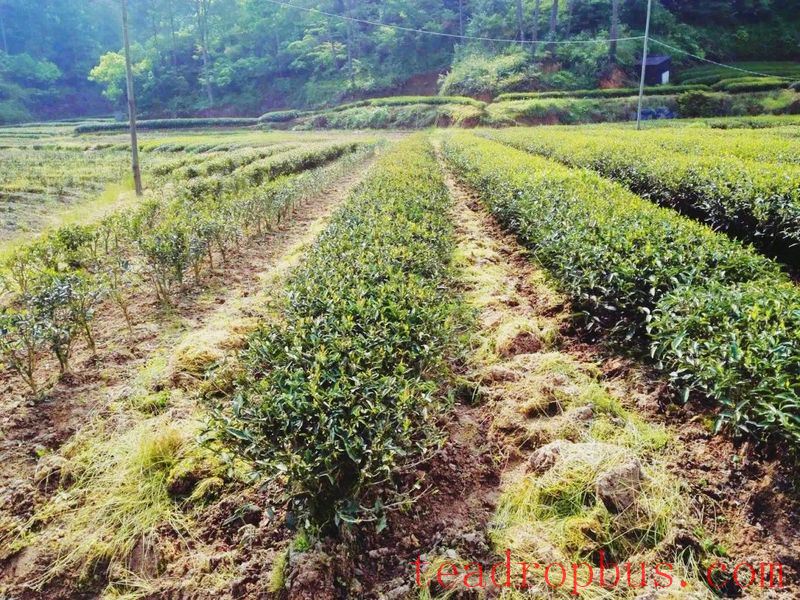A Brief Discussion on the Wuyi Cultivation Method
by Luo Shengcai
The ancestors in the Wuyi Tea region gradually formed a traditional and unique set of tea garden cultivation and management systems through long-term production practice. Mr. Zhang Tianfu, who had conducted extensive tea activities in Wuyi Mountain early on, was deeply impressed by the local folk methods of tea hill management. He was the first to define it as the “Wuyi Cultivation Method,” which he highly praised for its role in production in his selected works, “Fujian Oolong Tea.” Mr. Yao Yueming provided specific summaries and descriptions of the practical application of the Wuyi Cultivation Method (see “Wuyi Yueming”).
The “Wuyi Cultivation Method” has distinct regional characteristics and is the crystallization of the wisdom of generations of ancestors in the Wuyi tea region. It is an important factor in forming the unique and excellent qualities of Wuyi tea and a complete technical system for cultivating natural organic tea. It is also a significant component of the cultural heritage of the Wuyi tea region.
I. Formation and Spread of the Wuyi Cultivation Method · WUYIGENGZUOFA ·
1. Originated from primitive cultivation methods — “slash-and-burn agriculture.”
Represented by sloping tea gardens, the land was cleared of grass and vegetation, with trees and weeds felled and burned. After a basic ground clearance, holes were dug for sowing, with a handful of local tea seeds (Wuyi Cai tea) sown in each hole, allowing them to grow freely in competition during their seedling stage. The tea hills were cultivated in two ways depending on the availability of labor: one method involved comprehensive cultivation, where all the land was excavated and turned over. Another method was partial cultivation, where only the soil around the planted tea plants was turned over, leaving the spaces between rows untouched. Other parts were gradually expanded upon year by year until the entire area became arable, at which point the tea plants would have begun to be harvested. Due to the stringent conditions under which the tea plants grew, those that survived were relatively advantageous groups.
2. Based on abundant land and few people, fertile soil
In primitive cultivation, there was “no fertilization, no pruning,” and the tea plants relied on the natural fertility of the soil to grow. Typically, deep and fertile land that was easy to cultivate was chosen for tea planting. “Sparse planting and deep planting” aimed to expand the use of land and space, promoting robust growth of individual tea plants to increase tea yield. This also facilitated the selection and utilization of superior tea types. Deep planting, achieved by digging holes and planting, was accompanied by deep cultivation measures in the tea garden, encouraging the roots to grow deep into the soil. This was widely adopted as an important measure to enhance the drought resistance of tea plants.
3. Accumulation of historical experience over a long period
“Famous mountains produce famous teas” is a historical creation of the Wuyi tea region. In the renowned rock areas of Wuyi Mountain, the best locations were chosen, with no expense spared to clear the mountains, carve the rocks, build terraces, and plant precious single-plant varieties, among others. The ancestors of the tea region abandoned the habit of rough cultivation and carefully produced Wuyi rock tea, making it a specialty tea within Oolong tea. “Renowned mountains and renowned teas complement each other,” earning them fame both domestically and abroad.
The “guest soil method” is considered an innovation of the Wuyi tea region. Due to the lack of fertilization in tea fields, the soil fertility gradually declined. Therefore, the ancestors developed the method of carrying new (fertile) soil from non-tea lands to fill the tea gardens (hence also called “filling the mountain”). The thickness of the guest soil varied from two to three inches, significantly enhancing soil fertility. Generally, adding guest soil once could improve soil fertility for three to five years. However, due to the high cost, tea owners would not easily undertake this process. The “guest soil method” has also been selected as an effective measure for the renovation of low-yielding old tea gardens and promoted in tea regions both within and outside the province.

Deep soil cultivation in tea gardens in autumn (July 2025)
“Digging for gold in the seventh month, Silver in the eighth, copper in the ninth, and earth in the tenth” is a proverb in the Wuyi tea region, reflecting the importance placed on deep cultivation of tea gardens in autumn. This cultivation practice has been used in Wuyi Mountain for thousands of years, typically involving digging down 25 to 30 centimeters. By deep cultivation in autumn, the exposed soil is sun-dried, promoting the decomposition of mineral nutrients for absorption by the tea plants, eliminating weeds, loosening the soil layers, and encouraging deeper root growth, achieving multiple benefits. Deep cultivation of the soil in autumn is usually carried out once a year, although some tea gardens do it every other year.
The “lifting soil” method closely complements deep cultivation in autumn. When deep cultivation is performed, the soil around the tea plants is dug up and lifted onto the middle between two rows of tea, creating deep trenches about 30 to 35 centimeters wide on either side, which helps the soil clumps to dry and decompose and conserves rainwater during droughts.
The practice of “raising old trees” has been commonly implemented in the Wuyi tea region for a long time. In 1943, Lin Fuquan found during his investigation in the Wuyi tea region: “Old tea trees are often considered valuable.” This practice of raising old trees may have originated from the continuous selection and retention of superior single-plant varieties over the course of centuries, though this needs further verification.

Old Shui Xian bushes on Mazhen Peak (December 2014)
In recent decades since the introduction of clonal varieties like Shui Xian, the variety layout in the Wuyi tea region has changed, but the cultivation method of raising old trees has not changed. Some clonal varieties with good performance, such as Meizhan and Dwarf Wu Long, have been grown in the Wuyi tea region for extended periods without pruning. Since the end of the last century, in addition to raising old trees, there has been a trend towards raising high bushes (without pruning), especially with Shui Xian. Long-term cultivation of old bushes in the Wuyi Mountain tea region contrasts greatly with the regular replanting and replacement practices in Anxi tea region. Raising high bushes (without pruning) of old bushes has become an important measure for producing high-quality premium Wuyi tea, receiving support from producers and the market.
The “shallow hoeing to cut grass” is one of the traditional cultivation practices preserved in the Wuyi tea region for thousands of years. Tea gardens are shallowly hoed to cut grass three to five times a year, controlling weed growth while utilizing weeds to increase the organic matter content of the tea gardens. This is now referred to as the “herb cultivation method.” Shallow hoeing to cut grass, when matched with deep cultivation in autumn, becomes an effective measure for improving soil and cultivating the soil in tea gardens in the Wuyi tea region.

Shallow hoeing to cut grass in summer (June 2025)
“Covering the soil and leveling the mountain” is completed before winter, breaking up and leveling the soil clumps in the tea garden that have been sun-dried after deep cultivation, protecting the roots of the tea plants from the cold. Since the 1980s and 1990s, when emphasis was placed on heavy application of base fertilizer, covering the soil and leveling the mountain were arranged to follow the fertilization.
“Clearing ditches and draining water” is the final step in annual tea garden cultivation. Ditches around the tea gardens are repaired, and accumulated soil and stones are removed to ensure smooth drainage and prevent erosion by mountain floods.
“Repairing terraces” is an important measure to prevent soil erosion in tea gardens, carried out throughout the entire cultivation process. Damage to terraces caused by annual rainy seasons is repaired whenever necessary. For stone-built terraced tea gardens in the renowned rock areas, the stone walls are also repaired